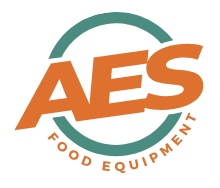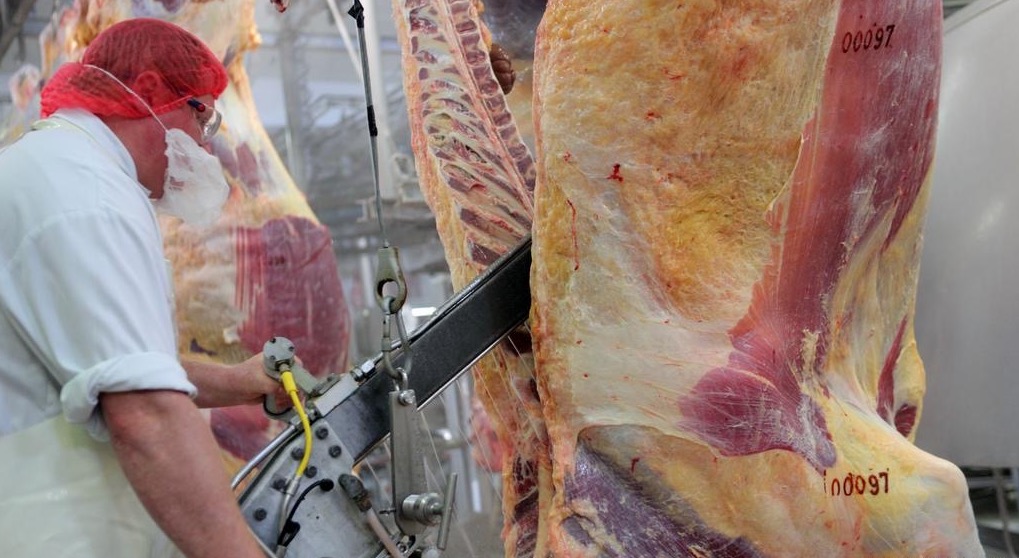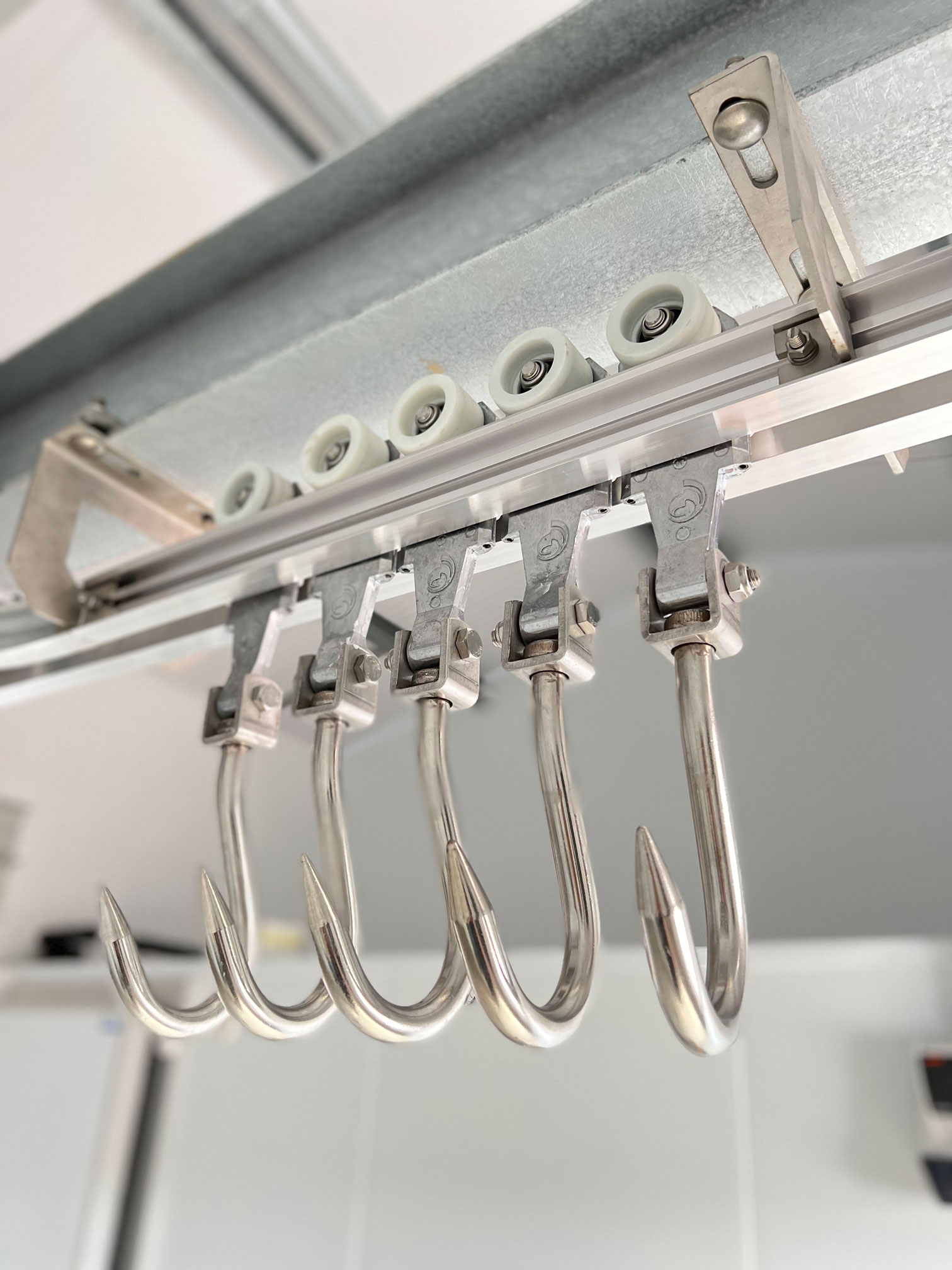Choosing the Right Meat Rail System: Why One Size Doesn’t Fit All
In a sector where efficiency, hygiene, and regulatory compliance are non-negotiable, the right meat rail system is not just a convenience, it’s a cornerstone of operational success.
Whether you’re operating a high-volume abattoir, a specialist deer larder, or a retail butchery, your rail system must be engineered to suit your unique process. Anything less risks inefficiency, contamination, and avoidable downtime.
At AES Food Equipment, we’ve supplied and designed custom meat rail systems across the UK for over a decade and in our family for over 5 decades. Our experience confirms what many discover too late: generic rail systems fail to meet the realities of modern meat processing.
What Is a Meat Rail System – and Why It Matters
A meat rail system is an overhead framework that supports the movement of carcasses through a meat processing business. Some key processing zones include slaughter, dressing, chilling, cutting, and dispatch. It ensures safe handling, maintains hygienic clearance, and supports the pace of production.
Core components include:
- Track: Typically, aluminium twin track (modern standard) or galvanised round bar (legacy systems)
- Rollers and hooks: twin track meat hooks with nylon roller wheels or aluminium tubular hooks to galvanised skid hooks.
- Switches and junctions: Directing carcass movement around the area / chiller
- Mounting system: Bespoke support steel or cleats suited to your ceiling height and infrastructure – one of the most important parts of the rail system
Your rail system forms the backbone of your production layout. If it's wrong, everything else suffers.
Why a One-Size-Fits-All Approach Doesn’t Work
Every site is different. A rail layout that works in one facility may completely fail in another. The reasons are practical:
- Species variation – Cattle, pigs, lambs, deer: all demand different rail specs and hook styles
- Carcass volume and throughput – 10 deer a week vs. 50 cattle a day requires vastly different structural and flow considerations
- Ceiling heights and physical constraints – Old farm buildings, converted units, or purpose-built plants all need tailored designs
- Workflow preferences – Kill-to-chill routes, dispatch timings, multi-room flow all differ between businesses
- Future scalability – Planning for expansion now avoids costly refits later
Designing your system without factoring in these variables will result in either inefficiency or costly rework.
Key Considerations When Designing a Meat Rail System
1. Structural Load & Clearance
- Ensure the supporting steel sits above the rail and roller path, away from refrigeration equipment to ensure good airflow
- Allow at least 300mm clearance from the floor to the lowest part of the carcass
- Structural calculations must confirm safe load-bearing for peak carcass weight and volume
2. Material Selection: Aluminium vs. Galvanised
Aluminium Twin Track:
- Hygienic and lightweight
- Corrosion-resistant and easy to clean
- Now the standard for modern installations
Galvanised Round Bar:
- Lower upfront cost
- Common in legacy systems
- Requires more frequent cleaning and maintenance
Your choice depends on your budget, hygiene requirements, and whether you’re building new or upgrading an old system.
3. Roller, Hook & Switch Compatibility
- Choose meat hooks / rollers that match your rail
- Hooks must suit the species and method of dressing (e.g., gambrels for pigs or 18mm hooks for beef)
- Switches must support the roller type—mixing components can lead to breakdowns
4. Efficient Flow Planning
- Map the process for your facility
- Design for minimal manual handling and backtracking
- Use switches, junctions, and gravity flow where possible to improve efficiency
5. Maintenance and Hygiene
- Consider how the system will be cleaned
- Avoid dead zones or overlaps that trap organic matter
- Twin track offers a smoother, easier-to-clean surface than round bar rail
6. Room for Growth
- Include capped ends or pre-installed junctions if future expansion is likely
- Modular systems allow easier bolt-on rail sections or transitions later
Avoiding Common Mistakes
- Insufficient Headroom
- The most frequent and costly error
- Without adequate clearance above the rail line, supporting steel may block hook travel or cause carcasses to hang too low
- Mismatched Equipment
- Rollers and switches from different systems may not align
- Hook types that don’t fit the rail or curve radius will cause jamming or wear
- Poorly Planned Flow
- Cross-contamination risk increases if dirty and clean zones overlap
- Without a clear directional path, staff handling time increases and efficiency drops
- Overlooking Compliance
- Carcasses must remain above the floor at all times
- Structural designs must meet hygiene, inspection, and FSA criteria
- Undervaluing Expert Consultation
- Buying on price rather than fit-for-purpose design leads to retrofit costs and operational disruption
- Buying on price rather than fit-for-purpose design leads to retrofit costs and operational disruption
- Buying on price rather than fit-for-purpose design leads to retrofit costs and operational disruption
Our Process: Design-First, Not Product-First
AES Food Equipment delivers rail systems based on a proven consultative process:
- Operational Briefing – We assess throughput, species, workflow, and hygiene standards
- Site Visit – Our team measures, photographs, and maps available headroom and load-bearing points
- CAD Design & Quotation – Layouts include switches, brackets, and support steel with clear costing
- Installation or Supply – We provide either full installation or supply-only with layout support
- Aftercare & Upgrades – Ongoing access to replacement rollers, hooks, and additional components
Our systems include:
- Aluminium twin track with heavy-duty meat hooks / rollers
- Specialist hooks and gambrels for pigs, cattle, and sheep
- Switches and returns to manage multi-room flow
- Custom-fabricated steelwork for ceiling mounting or floor supports
- Roller refurbishment and compatibility upgrades for older rail system
Real-World Examples: Case Studies
Avalon Farm Butchery at The Newt in Somerset
At Avalon Farm, a premium estate committed to sustainable and regenerative farming, the goal was to create a high-quality, on-site butchery facility that reflected their brand values. Working alongside the estate team, AES designed and installed a full aluminium twin track rail system, complete with custom hooks and roller bodies. The layout was tailored to their product flow—from slaughter to cutting room—with consideration for hygiene zoning and animal welfare.
Key features:
- Purpose-built layout for seamless movement between slaughter, chill, and processing
- Custom stainless steel workstations and rail returns
- Organ rail included for internal product handling
- Clear floor clearance maintained throughout to meet audit requirements
This installation elevated both operational performance and customer-facing presentation, supporting Avalon’s high-end meat offering.
Gloucester Services Farmshop Butchery
Gloucester Services is renowned for showcasing local producers and artisan food. Their in-house butchery needed a robust and hygienic rail system to support growing demand. AES provided a modular aluminium twin track system, maximising the use of a restricted ceiling height without compromising compliance.
Highlights:
- Delivered a low-profile rail solution to work within tight structural limits
- Installed switches and rail curves to optimise workflow between chillers and prep areas
- Provided a long-term solution that allows for future system extension
This solution ensured that the butchery maintained its artisan ethos while improving throughput and efficiency.
Why Choose AES Food Equipment?
- UK-based with over 12 years of industry experience
- Full technical design and CAD layout capability
- Strong supply network with specialist European manufacturers
- Exclusive roller and hook systems built for abattoir environments
- Reliable consultation and aftersales support
We understand meat processing. From small game larders to high-volume abattoirs, our systems are built around your process—not the other way around.
Conclusion: Build a Rail System That Supports Your Business
Investing in a tailored meat rail system pays dividends in efficiency, hygiene, and operational resilience. Cutting corners leads to poor clearance, non-compliance, and unnecessary costs down the line.
Speak to our team today for a no-obligation consultation and let us help you design a system that works the way your business does.
AES Food Equipment – Built Around Your Business.



